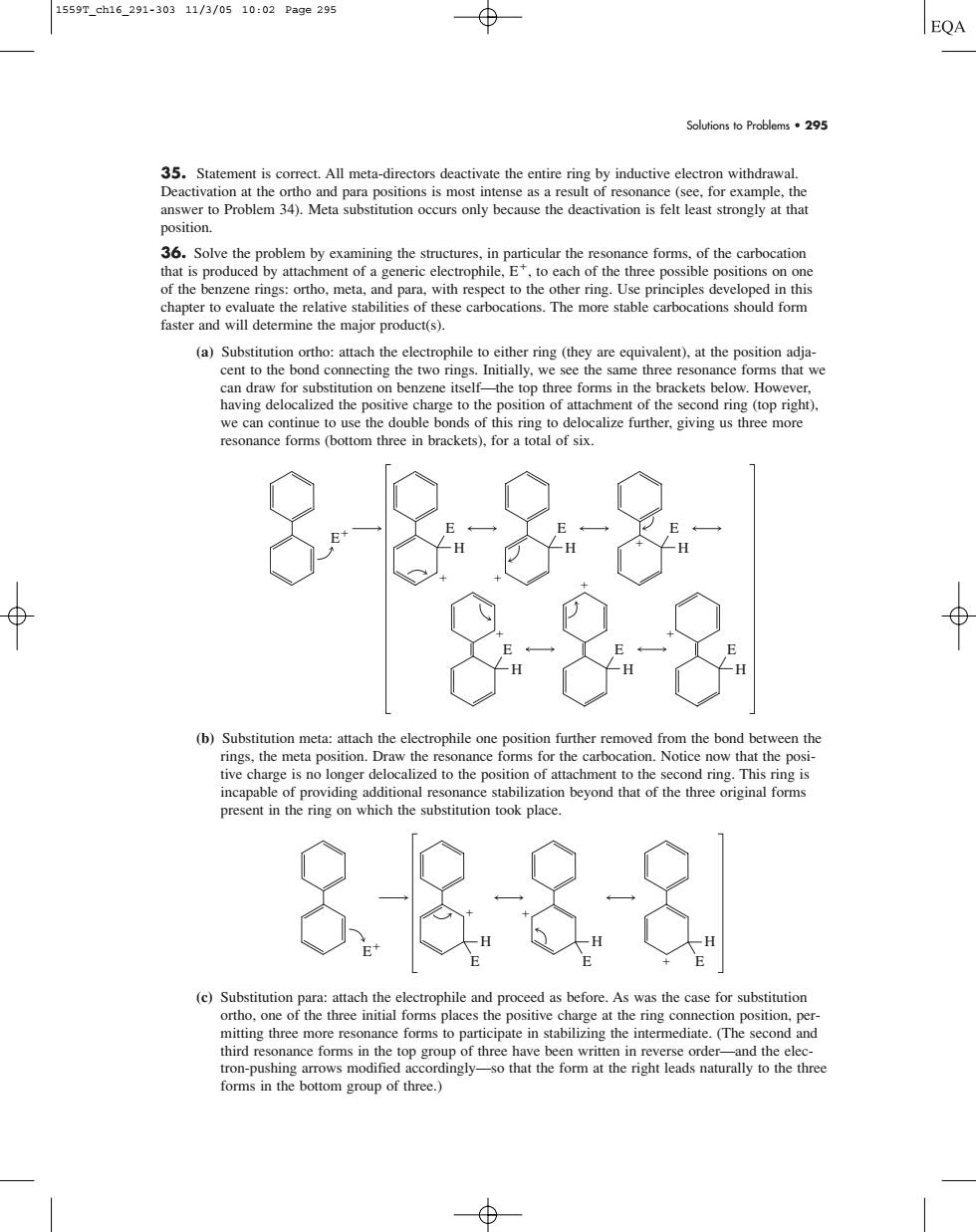正在加载图片...

1559Tch16291-30311/3/0510:02Page295 Solutions to Problems295 position. examining the st ance form s.of the carbocatio of the benzen (a) can dr for benzene top three forms in the brackets below.Howeve having del lized the positive c 8-288 8-8-8 ween the incapable of providing additional resonance stabilization beyond that of the three original forms present in the ring on uon took place 88&8 mitting three more resonance forms to participate in stabilizing the intermediate.(The second and forms in the bottom group of three.Solutions to Problems • 295 35. Statement is correct. All meta-directors deactivate the entire ring by inductive electron withdrawal. Deactivation at the ortho and para positions is most intense as a result of resonance (see, for example, the answer to Problem 34). Meta substitution occurs only because the deactivation is felt least strongly at that position. 36. Solve the problem by examining the structures, in particular the resonance forms, of the carbocation that is produced by attachment of a generic electrophile, E, to each of the three possible positions on one of the benzene rings: ortho, meta, and para, with respect to the other ring. Use principles developed in this chapter to evaluate the relative stabilities of these carbocations. The more stable carbocations should form faster and will determine the major product(s). (a) Substitution ortho: attach the electrophile to either ring (they are equivalent), at the position adjacent to the bond connecting the two rings. Initially, we see the same three resonance forms that we can draw for substitution on benzene itself—the top three forms in the brackets below. However, having delocalized the positive charge to the position of attachment of the second ring (top right), we can continue to use the double bonds of this ring to delocalize further, giving us three more resonance forms (bottom three in brackets), for a total of six. (b) Substitution meta: attach the electrophile one position further removed from the bond between the rings, the meta position. Draw the resonance forms for the carbocation. Notice now that the positive charge is no longer delocalized to the position of attachment to the second ring. This ring is incapable of providing additional resonance stabilization beyond that of the three original forms present in the ring on which the substitution took place. (c) Substitution para: attach the electrophile and proceed as before. As was the case for substitution ortho, one of the three initial forms places the positive charge at the ring connection position, permitting three more resonance forms to participate in stabilizing the intermediate. (The second and third resonance forms in the top group of three have been written in reverse order—and the electron-pushing arrows modified accordingly—so that the form at the right leads naturally to the three forms in the bottom group of three.) E H E H E H E E H H H H H H E EEE E E 1559T_ch16_291-303 11/3/05 10:02 Page 295������������